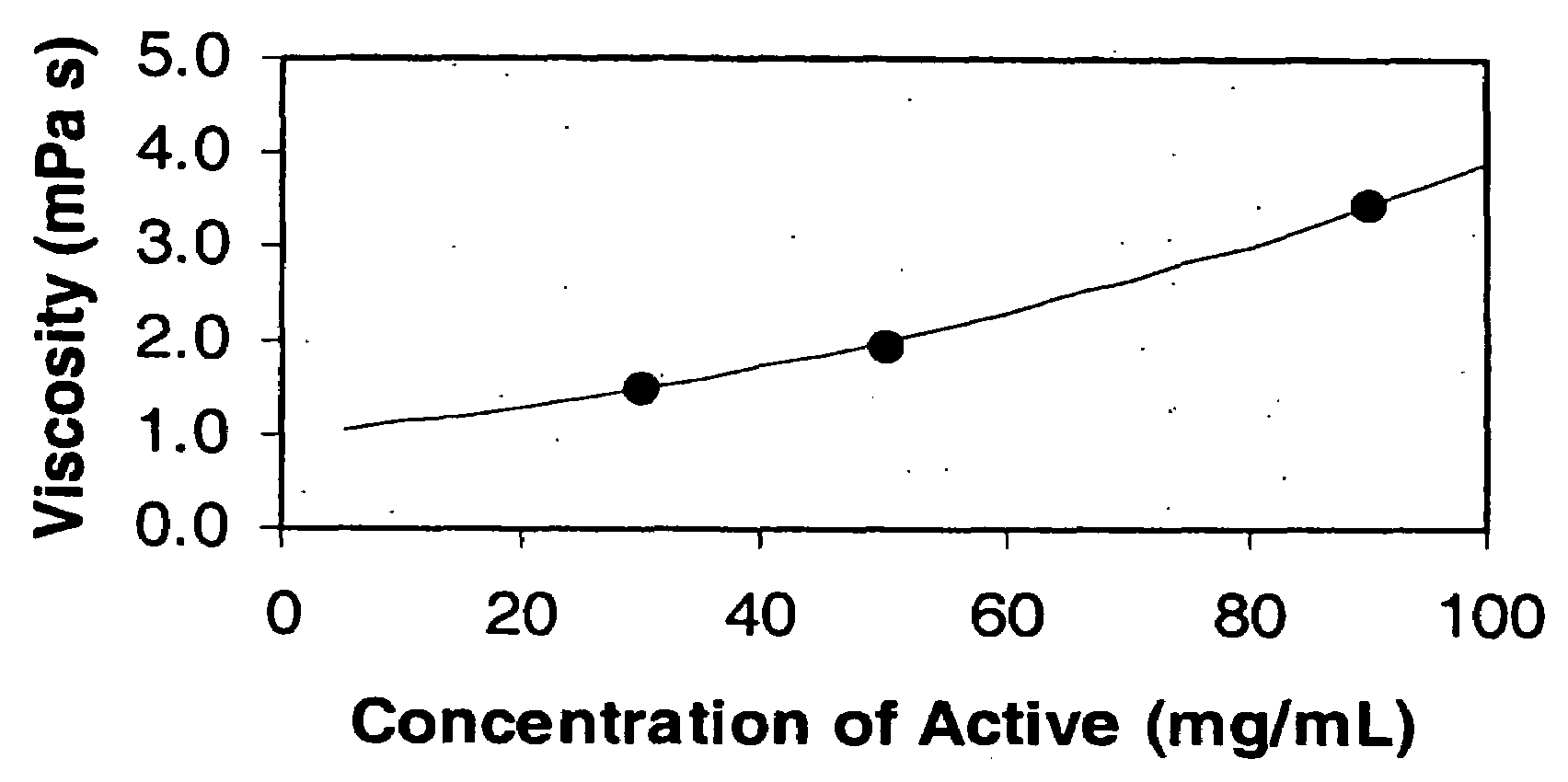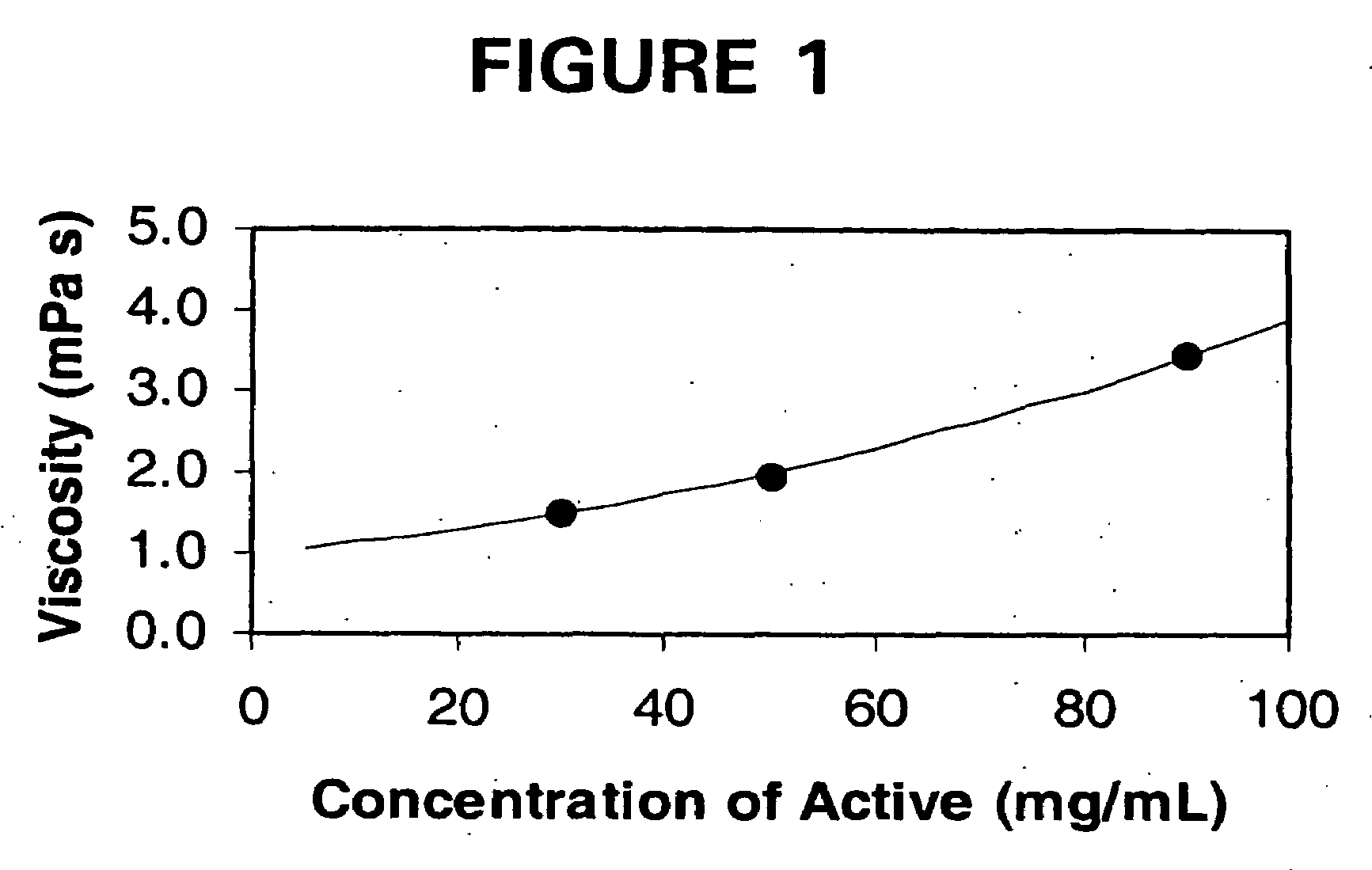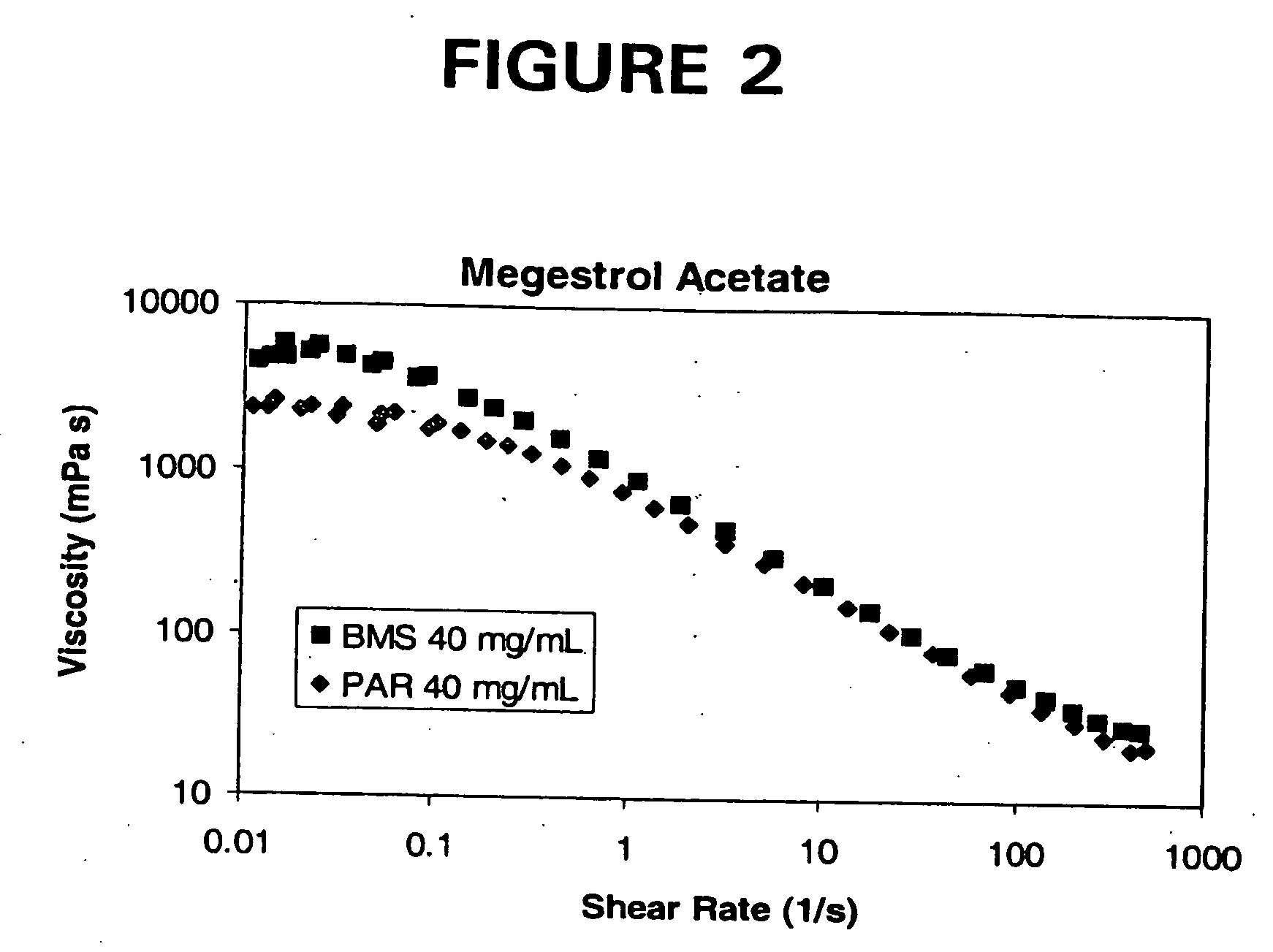Low viscosity liquid dosage forms
a liquid formulation and low viscosity technology, applied in the direction of biocide, dispersed delivery, therapy, etc., can solve the problems of high dose loading, poor water soluble, and difficult to develop liquid formulations for oral and parenteral administration of such agents, and achieve low viscosity, low dose loading, and low viscosity
- Summary
- Abstract
- Description
- Claims
- Application Information
AI Technical Summary
Problems solved by technology
Method used
Image
Examples
example 1
[0132]The purpose of this example was to demonstrate the improved viscosity characteristics of the liquid dosage forms of the invention as compared to conventional liquid dosage forms of the same active agent, megestrol acetate.
[0133]Megestrol Acetate is currently marketed by Bristol Myers Squibb, Co. (Megace®) and Par Pharmaceuticals, Inc. The formulations are relatively large volume. For example, both BMS's Megace® and Par Pharmaceuticals' megestrol acetate oral suspension contains 40 mg of micronized megestrol acetate per ml and the package insert recommends an initial adult dosage of megestrol acetate oral suspension of 800 mg / day (20 mL / day). The commercial formulations of megestrol acetate are highly viscous suspensions, which have a relatively long residence time in the mouth and any tubing. Highly viscous substances are not well accepted by patient populations, particularly patients suffering wasting and those that are intubated.
[0134]Three liquid dosage forms of nanoparticu...
example 2
[0142]The purpose of this example was to demonstrate the improved viscosity characteristics of the liquid dosage forms of the invention as compared to conventional liquid dosage forms of the same active agent, naproxen.
[0143]Two aqueous nanoparticulate formulations of naproxen were prepared, and the viscosity of these two formulations was then compared to a liquid dosage form of a conventional form (i.e., non-nanoparticulate) of naproxen—NAPROSYN® (Hoffmann-La Roche Inc. (Roche) (Nutley, N.J.).
[0144]The first nanoparticulate naproxen formulation comprised polyvinylpyrrolidone (PVP) as a surface stabilizer. An aqueous dispersion of 3 wt. % PVP K29 / 32 and 30 wt. % naproxen was charged into a 2 L recirculation mill (Type: LMZ 2; Mfg.: Netzsh, Inc., Exton, Pa.). The milling media consisted of PolyMill™500 polymeric media (Dow Chemical Co.). The total batch size was 15 kg. The mill was operated at ca 3000 rpm. The batch was harvested after 15 hrs of operation, at which the naproxen parti...
example 3
[0148]The purpose of this example was to demonstrate the improved viscosity characteristics of the liquid dosage forms of the invention as compared to conventional liquid dosage forms of the same active agent, Compound A, which is a COX-2 inhibitor.
[0149]A nanoparticulate dispersion of COMPOUND A having 25% (w / w) COMPOUND A, 5% copovidone (w / w), and 0.357% docusate sodium (DOSS) (w / w) was milled for 4.5 hours under high energy milling conditions in a DYNO®-Mill KDL (Willy A. Bachofen A G, Maschinenfabrik, Basel, Switzerland) equipped with a 300 cc recirculation chamber and utilizing 500 μm polymeric attrition media (Dow Chemical Co.). Following milling, the final mean particle size of the Compound A particles was 117 nm. Particle size analysis was performed with a Horiba LA-910 particle size analyzer (Irvine, Calif.).
[0150]240 g of the milled nanoparticulate Compound A dispersion was then added to a solution containing 20 g sucrose, 0.8 g methyl paraben, 0.04 g propyl paraben, 0.6 g...
PUM
| Property | Measurement | Unit |
|---|---|---|
| viscosity | aaaaa | aaaaa |
| particle size | aaaaa | aaaaa |
| viscosity | aaaaa | aaaaa |
Abstract
Description
Claims
Application Information
 Login to View More
Login to View More - R&D
- Intellectual Property
- Life Sciences
- Materials
- Tech Scout
- Unparalleled Data Quality
- Higher Quality Content
- 60% Fewer Hallucinations
Browse by: Latest US Patents, China's latest patents, Technical Efficacy Thesaurus, Application Domain, Technology Topic, Popular Technical Reports.
© 2025 PatSnap. All rights reserved.Legal|Privacy policy|Modern Slavery Act Transparency Statement|Sitemap|About US| Contact US: help@patsnap.com



